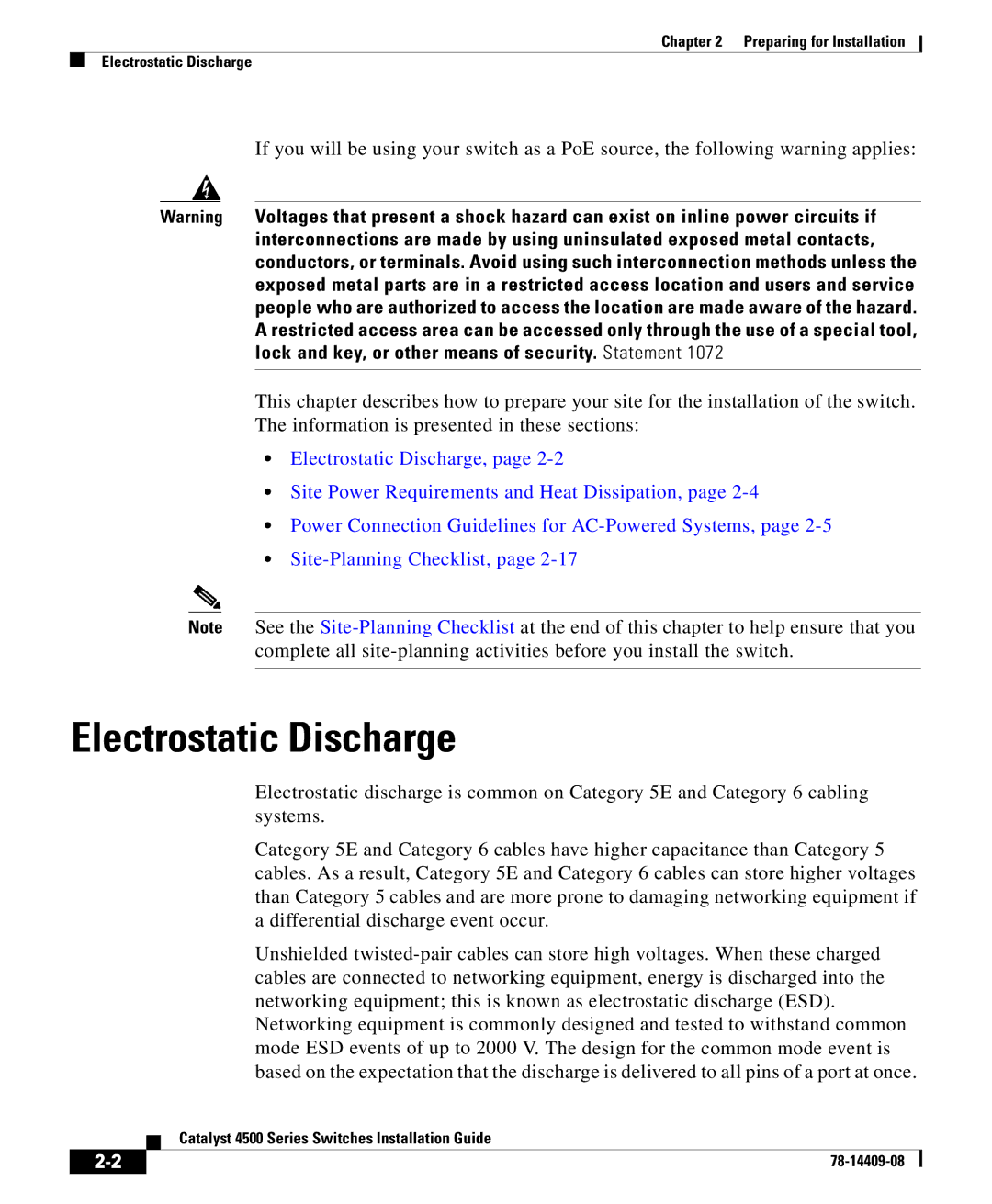
Chapter 2 Preparing for Installation
Electrostatic Discharge
If you will be using your switch as a PoE source, the following warning applies:
Warning Voltages that present a shock hazard can exist on inline power circuits if interconnections are made by using uninsulated exposed metal contacts, conductors, or terminals. Avoid using such interconnection methods unless the exposed metal parts are in a restricted access location and users and service people who are authorized to access the location are made aware of the hazard. A restricted access area can be accessed only through the use of a special tool, lock and key, or other means of security. Statement 1072
This chapter describes how to prepare your site for the installation of the switch. The information is presented in these sections:
•Electrostatic Discharge, page
•Site Power Requirements and Heat Dissipation, page
•Power Connection Guidelines for
•
Note See the
Electrostatic Discharge
Electrostatic discharge is common on Category 5E and Category 6 cabling systems.
Category 5E and Category 6 cables have higher capacitance than Category 5 cables. As a result, Category 5E and Category 6 cables can store higher voltages than Category 5 cables and are more prone to damaging networking equipment if a differential discharge event occur.
Unshielded
Networking equipment is commonly designed and tested to withstand common mode ESD events of up to 2000 V. The design for the common mode event is based on the expectation that the discharge is delivered to all pins of a port at once.
| Catalyst 4500 Series Switches Installation Guide |
|
